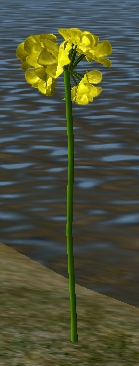The Wiki for Tale 7 is in read-only mode and is available for archival and reference purposes only. Please visit the current Tale 11 Wiki in the meantime.
If you have any issues with this Wiki, please post in #wiki-editing on Discord or contact Brad in-game.
Difference between revisions of "Papyrus"
| Line 28: | Line 28: | ||
====Suggested Planting and Tips==== | ====Suggested Planting and Tips==== | ||
| − | |||
*Make sure you are planting 1 seed at least 5 - 10 steps apart. Don't plant seeds farther apart than 15 coordinates. Short gaps, say 2 coordinates, substantially reduce the yield over seed planted. | *Make sure you are planting 1 seed at least 5 - 10 steps apart. Don't plant seeds farther apart than 15 coordinates. Short gaps, say 2 coordinates, substantially reduce the yield over seed planted. | ||
Revision as of 10:08, 20 October 2015
| English | Deutsch | français | magyar | Türkçe |
Papyrus (often called 'papy' for short) is a plant that is grown along the shores of the Nile. It can be run through a Paper Press to make Papyrus Paper. It can also be dried in a Drying Rack or Flax Hammock in order to produce Dried Papyrus (which has its own uses).
Papyrus comes in two varieties, depending on how it is grown:
- Fertile papyrus is cultivated by sowing papyrus seeds in the Nile (see Wild Cultivation, below). It yields new seeds when dried.
- Sterile papyrus is obtained by growing seeds in a Papyrus Tank. It is identical to fertile papyrus except that it does does not give seeds when dried.
Wild papyrus plants were around at the start of the telling, but at this point, any papyrus you come across will have been cultivated by somebody. Taking papyrus that you didn't seed yourself is considered by some to be rude.
If you don't currently have any Papyrus seeds, or Fertile Papyrus to dry, ask in your regional chat. Most likely someone will have some they can share with you, or have warehouses near popular drying points.
Cultivation
Papyrus can grown wild, or grown in tanks.
Wild Cultivation
In the wild, papyrus is grown by throwing seeds into the Nile, then waiting for them to float downstream (i.e. northward), where they wash up on the riverbank and grow into papyrus plants.
Plant seeds on a muddy bank, then look for plants about 10 minutes later about 100-250 coordinates NORTH from where you planted it. Both the West Nile and East Nile are valid planting areas.
Papyrus will grow on both banks of the nile, as well as adjacent water sources (up to 1000 coordinates away). This is particularly prevalent in what some think are 'dead spots', as this indicates the papyrus actually grew on a different water source nearby. If you find that there is a large gap in your run along the nile, check for lakes and ponds nearby.
Yields
Yields can be up to 20 papyrus from 1 seed, depending on where you plant and how well you space them. The exact yield varies depending on time of day, growing later at night is better. 20:1 is pretty hard to achieve, though. Usually, if you plant reasonably, you'll see yields of anywhere from 5:1 to 12:1.
Suggested Planting and Tips
- Make sure you are planting 1 seed at least 5 - 10 steps apart. Don't plant seeds farther apart than 15 coordinates. Short gaps, say 2 coordinates, substantially reduce the yield over seed planted.
- Pinning your Plant menu makes it easy to click in the far distance and plant as your avatar runs. You can also use the arrow keys to run, and if your mouse cursor is over the Plant menu, use the tab key to activate the planting action.
- You can right or left click to pick papyrus. Right-clicking to pick papyrus has the advantage that, if you mis-click, you will not run past the flower.
Aquaculture
Sterile Papyrus can be grown in a Papyrus Tank, also know as Aquaculture.
The disadvantages of aquaculture:
- The yield of harvested papyrus to seed is significantly lower than when papyrus is grown in the wild.
- The resulting Sterile Papyrus cannot be used to reproduce seeds, so any papyrus seeds used in the tank are lost.
The main advantage of papyrus aquaculture is to save time:
- If you're far from the Nile, you don't have to run to and from the Nile to plant, harvest, and dry papyrus.
- Planting papyrus in a tank takes very low effort compared to producing wild
- Once the papyrus has finished growing, you can leave it in the tank as long as you want without the chance of it disappearing.
Making Seeds
Papyrus Seeds (hf) are produced by drying Nile-grown papyrus at a high altitude. The higher the altitude at which the papyrus is dried, the more seeds are produced. At sea level, dried papyrus will usually produce no seeds; on the peaks of very tall mountains, an average of 40+ seeds per bundle of 20 papyrus is normal, but the per bundle yield ranges from 0 to 100 seeds. If you're concerned with getting lots of seeds, dry full bundles so rounding doesn't cost you so many fractions. Note: Even on the peak of a mountain, next to a rack that yielded 48 seeds, another rack produced no seeds.
Uses
- Can be converted into Papyrus Paper in a Paper Press. Each batch of 4 papyrus yields 2 paper.
- Can be dried in a Drying Rack or Flax Hammock in order to produce Dried Papyrus.
Skills
- 1 Fertile Papyrus required for Ecology tuition at a School of Body
Required By
Cut Stone Obelisk, Dried Papyrus, Paper Press, Papyrus Paper Fabrication
